Autoantibodies to the C-terminal subunit of RLIP76 induce oxidative stress and endothelial cell apoptosis in immune-mediated vascular diseases and atherosclerosis
- PMID: 17993611
- PMCID: PMC2343593
- DOI: 10.1182/blood-2007-05-092825
Autoantibodies to the C-terminal subunit of RLIP76 induce oxidative stress and endothelial cell apoptosis in immune-mediated vascular diseases and atherosclerosis
Abstract
Although detection of autoantibodies in the peripheral blood from patients with immune-mediated endothelial dysfunctions has so far failed to provide tools of diagnostic or pathogenetic value, putative bioindicators include anti-endothelial cell antibodies, a heterogeneous family of antibodies that react with autoantigens expressed by endothelial cells. In this study, to identify endothelial autoantigens involved in the autoimmune processes causing endothelial damage, we screened a human microvascular endothelial cell cDNA library with sera from patients with Behçet's disease. We identified antibodies to the C-terminus of Ral binding protein1 (RLIP76), a protein that catalyzes the ATP-dependent transport of glutathione (GSH) conjugates including GSH-4-hydroxy-t-2,3-nonenal, in the serum of a significant percentage of patients with various diseases characterized by immune-mediated endothelial dysfunction, including Behçet disease, systemic sclerosis, systemic lupus erythematosus and carotid atherosclerosis. These autoantibodies increased intracellular levels of 4-hydroxy-t-2,3-nonenal, decreased levels of GSH and activated C-Jun NH2 Kinase signaling (JNK), thus inducing oxidative stress-mediated endothelial cell apoptosis. The dietary antioxidant alpha-tocopherol counteracted endothelial cell demise. These findings suggest that autoantibodies to RLIP76 play a pathogenetic role in immune-mediated vascular diseases and represent a valuable peripheral blood bioindicator of atherosclerosis and immune-mediated vascular diseases.
Figures
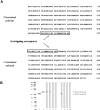
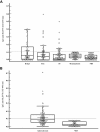

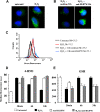
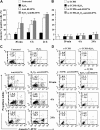
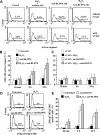
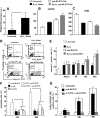
Similar articles
-
Gender disparity in susceptibility to oxidative stress and apoptosis induced by autoantibodies specific to RLIP76 in vascular cells.Antioxid Redox Signal. 2011 Dec 1;15(11):2825-36. doi: 10.1089/ars.2011.3942. Epub 2011 Aug 8. Antioxid Redox Signal. 2011. PMID: 21671802
-
The non-ABC drug transporter RLIP76 (RALBP-1) plays a major role in the mechanisms of drug resistance.Curr Drug Metab. 2007 May;8(4):315-23. doi: 10.2174/138920007780655414. Curr Drug Metab. 2007. PMID: 17504221 Review.
-
RLIP76 is the major ATP-dependent transporter of glutathione-conjugates and doxorubicin in human erythrocytes.Arch Biochem Biophys. 2001 Jul 15;391(2):171-9. doi: 10.1006/abbi.2001.2395. Arch Biochem Biophys. 2001. PMID: 11437348
-
Identification and characterization of the carboxy-terminal region of Sip-1, a novel autoantigen in Behçet's disease.Arthritis Res Ther. 2006;8(3):R71. doi: 10.1186/ar1940. Epub 2006 Apr 12. Arthritis Res Ther. 2006. PMID: 16611372 Free PMC article.
-
Transport functions and physiological significance of 76 kDa Ral-binding GTPase activating protein (RLIP76).Acta Biochim Pol. 2002;49(4):855-67. Acta Biochim Pol. 2002. PMID: 12545192 Review.
Cited by
-
A potential function of RLIP76 in the ovarian corpus luteum.J Ovarian Res. 2019 Apr 18;12(1):34. doi: 10.1186/s13048-019-0510-8. J Ovarian Res. 2019. PMID: 30999946 Free PMC article. Review.
-
Effects of Alcohol Consumption on Oxidative Stress in a Sample of Patients Recruited in a Dietary Center in a Southern University Hospital: A Retrospective Study.Medicina (Kaunas). 2022 Nov 18;58(11):1670. doi: 10.3390/medicina58111670. Medicina (Kaunas). 2022. PMID: 36422209 Free PMC article.
-
Ras family of small GTPases in immunity and inflammation.Curr Opin Pharmacol. 2012 Aug;12(4):458-63. doi: 10.1016/j.coph.2012.02.003. Epub 2012 Mar 7. Curr Opin Pharmacol. 2012. PMID: 22401931 Free PMC article. Review.
-
Streptococcal-vimentin cross-reactive antibodies induce microvascular cardiac endothelial proinflammatory phenotype in rheumatic heart disease.Clin Exp Immunol. 2013 Sep;173(3):419-29. doi: 10.1111/cei.12135. Clin Exp Immunol. 2013. PMID: 23663103 Free PMC article.
-
Overexpression of RLIP76 Required for Proliferation in Meningioma Is Associated with Recurrence.PLoS One. 2015 May 20;10(5):e0125661. doi: 10.1371/journal.pone.0125661. eCollection 2015. PLoS One. 2015. PMID: 25993541 Free PMC article.
References
-
- Lee SJ, Kavanaugh A. 4. Autoimmunity, vasculitis, and autoantibodies. J Allergy Clin Immunol. 2006;117:S445–S450. - PubMed
-
- Martin F, Chan AC. Pathogenic roles of B cells in human autoimmunity; insights from the clinic. Immunity. 2004;20:517–527. - PubMed
-
- Meroni P, Ronda N, Raschi E, Borghi MO. Humoral autoimmunity against endothelium: theory or reality? Trends Immunol. 2005;26:275–281. - PubMed
-
- Youinou P, Le Dantec C, Bendaoud B, Renaudineau Y, Pers JO, Jamin C. Endothelium, a target for immune-mediated assault in connective tissue disease. Autoimmun Rev. 2006;5:222–228. - PubMed
Publication types
MeSH terms
Substances
LinkOut - more resources
Full Text Sources
Other Literature Sources
Medical
Research Materials
Miscellaneous

